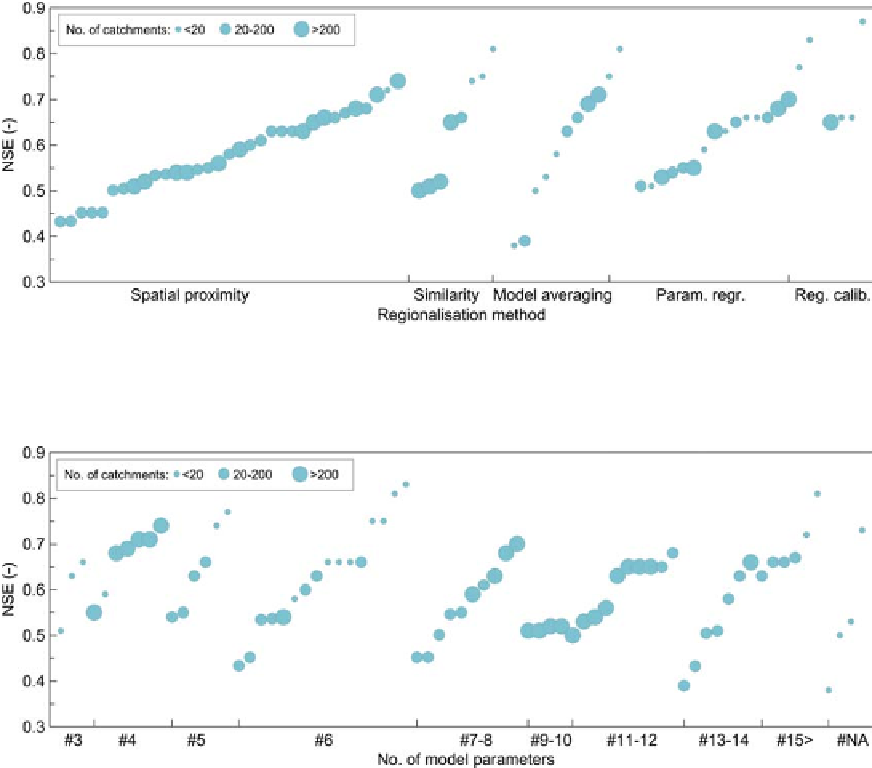Geography Reference
In-Depth Information
Figure 10.36. Median Nash
-
Sutcliffe efficiency (NSE) of predicting hydrographs in ungauged basins stratified by the regionalisation
method and ranked by performance. Each symbol refers to a result from the studies in
Table A10.1
. Circle size indicates number
of catchments per study. After Parajka et al.(
2013
).
Figure 10.37. Median Nash-Sutcliffe efficiency (NSE) of predicting hydrographs in ungauged basins stratified by model complexity
(number of transferred model parameters) and ranked by performance. Each symbol refers to a result from the studies in
Table A10.1
. Circle
size indicates number of catchments per study. After Parajka et al.(
2013
).
approach performed best. Oudin et al.(
2008
) concluded
that, for France, spatial proximity provided the best region-
alisation method while the regression approach was the least
satisfactory. The results of Parajka et al.(
2005
) indicate
that, for Austria, kriging and the similarity-based approach
performed equally well and significantly better than regres-
sion or global or local parameter mean. The results of
Samuel et al. (2011a)
showed that also for less dense net-
works of gauges in Ontario (Canada), spatial proximity
methods can perform more favourably than methods that
use catchment characteristics, and coupling of spatial prox-
imity and similarity methods provided better performance
than regression and model averaging approaches.
overall the models with different complexity tend to have
similar performances. The median of the performance for
each group of models is around 0.65, with the exception of
the group of 9
10 model parameters, which is lower. The
largest variability (between 0.5 and 0.88) is found for
regionalisation of models with 11
-
12 parameters. Studies
that explored regionalisation performance of models with
different complexity (Viney et al.,
2009
; Chiew et al.,
2010
;
Petheram et al., 2012
) suggest that whilst an increas-
ing number of free parameters leads to increased calibra-
tion performance, the difference in runoff prediction
performance was small or negligible (Viney et al.,
2009
;
Petheram et al., 2012). The results of Oudin et al.(
2008
)
showed that simpler models might also slightly outperform
more complex models.
It is also interesting to compare what regionalisation
methods have been used in different studies. The spatial
proximity approach tends to be used for more complex
-
How does model complexity impact performance?
To assess the effect of model complexity the studies were
grouped in terms of the number of model parameters that
were regionalised (
Figure 10.37
). The results indicate that

Search WWH ::

Custom Search